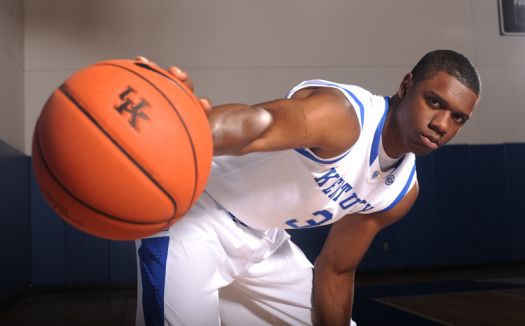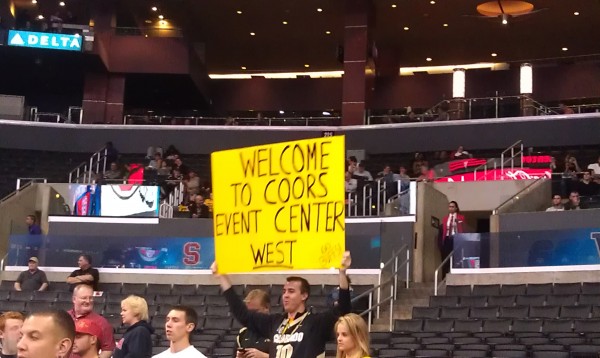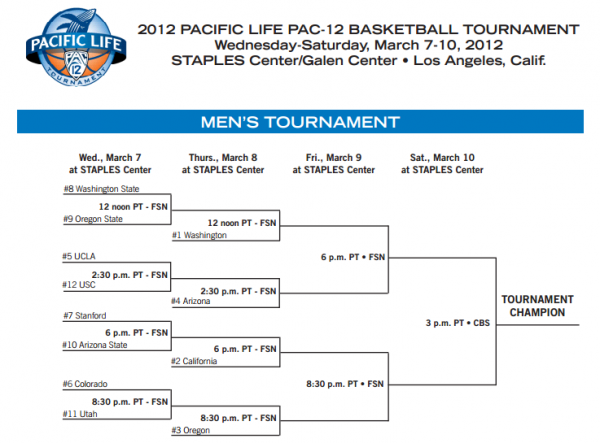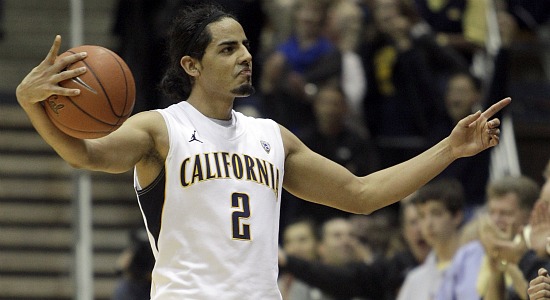
Zach Hayes is RTC’s official bracketologist.
Last Update: Friday, March 9, 8:29 AM ET.
Changes:
- Mississippi State sustained their second loss of the season to Georgia Thursday at the SEC Tournament. Combine that with losses to Auburn, Arkansas, LSU and Ole Miss, a #66 RPI, #66 SOS and #191 non-conference SOS and all of a sudden the floundering Bulldogs are dangerously close to missing the NCAA Tournament, a crime given their talent level. The only thing saving them at this point is bubble teams Seton Hall, Washington and Northwestern all sustaining crucial losses today. State remains in the projected field at 21-1 (8-9) with wins at Vanderbilt, vs. Purdue and vs. West Virginia.
- South Florida remains in the field despite their loss to Notre Dame. In fact, the Bulls aren’t even in the last four in. They should breathe easy with 13 Big East wins, including at Louisville (which looks stronger after today), vs. Cincinnati and vs. Seton Hall. Notre Dame jumps up a few spots with yet another Big East top-50 win on the S-Curve and could climb even further with a victory Friday night.
- Texas’ huge win over Iowa State combined with other bubble losses all but locks up a spot in the field despite only four wins against the RPI top-100. The Longhorns have now beaten Iowa State twice, Kansas State and Temple with decent computer numbers (#52 RPI, #21 SOS, #98 non-conference SOS).
- Lamar out of the Southland replaces UT-Arlington as a #16 seed with LIU-Brooklyn hoping up a seed line.
- Oregon is now eliminated from bubble contention with their Pac-12 Tournament loss to Colorado. Cal is the only team still alive in that tournament currently projected in the field, so the odds of a bid stealer are considerable if Cal makes the finals and appears in good shape for an at-large.
- Last Four In: Seton Hall, Drexel, Miami (FL), Mississippi State.
- First Four Out: Washington, Tennessee, Northwestern, NC State.
- Next Four Out: Dayton, Oral Roberts, St. Joseph’s, Iona.
3/9 S-Curve
1 Seeds: Kentucky, Syracuse, Kansas, North Carolina
2 Seeds: Duke, Michigan State, Missouri, Ohio State
3 Seeds: Marquette, Baylor, Michigan, Georgetown
4 Seeds: Indiana, Wisconsin, Florida State, Louisville
5 Seeds: Temple, Wichita State, Murray State, UNLV
6 Seeds: Notre Dame, Vanderbilt, Florida, Creighton
7 Seeds: Saint Mary’s, San Diego State, Gonzaga, New Mexico
8 Seeds: Iowa State, Kansas State, Cincinnati, Memphis
9 Seeds: Purdue, Saint Louis, Connecticut, Alabama
10 Seeds: Virginia, Southern Miss, Harvard, West Virginia
11 Seeds: Colorado State, California, BYU, VCU
12 Seeds: Texas, Long Beach State, South Florida, Xavier, Mississippi State
13 Seeds: Miami (FL), Drexel, Seton Hall, Nevada, Davidson
14 Seeds: South Dakota State, Akron, Belmont, Montana
15 Seeds: Loyola (MD), Detroit, Lehigh, LIU-Brooklyn
16 Seeds: UNC-Asheville, Norfolk State, Lamar, Stony Brook, Mississippi Valley State, Western Kentucky
 Automatic bids: Stony Brook, Temple, North Carolina, Belmont, Kansas, Syracuse, Montana, UNC-Asheville, Michigan State, Long Beach State, VCU, Memphis, Detroit, Harvard, Loyola (MD), Akron, Norfolk State, Creighton, San Diego State, LIU Brooklyn, Murray State, Washington, Lehigh, Kentucky, Davidson, Lamar, Mississippi Valley State, Western Kentucky, South Dakota State, Saint Mary’s, Nevada.
Automatic bids: Stony Brook, Temple, North Carolina, Belmont, Kansas, Syracuse, Montana, UNC-Asheville, Michigan State, Long Beach State, VCU, Memphis, Detroit, Harvard, Loyola (MD), Akron, Norfolk State, Creighton, San Diego State, LIU Brooklyn, Murray State, Washington, Lehigh, Kentucky, Davidson, Lamar, Mississippi Valley State, Western Kentucky, South Dakota State, Saint Mary’s, Nevada.
Bids per conference: Big East (10), Big 12 (6), Big Ten (6), SEC (5), ACC (5), Mountain West (4), Atlantic 10 (3), West Coast (3), Conference USA (2), Missouri Valley (2), Colonial (2).
 To earn a spot in the field:
To earn a spot in the field:
- Southern Miss- Reach the Conference USA Tournament semifinals by beating Marshall
- Virginia- Beat NC State in the ACC Tournament quarterfinals
- Colorado State- Beat San Diego State in the Mountain West Tournament semifinals
- California- Beat Oregon in the Pac-12 Tournament semifinals (semifinal game vs. Colorado would not clinch bid)
- Miami- Beat Florida State in the quarterfinal and Duke in the semifinal (semifinal win vs. Virginia Tech would not clinch bid)
- Long Beach State- Reach the Big West Tournament final
- Xavier- Beat Dayton in the Atlantic 10 Tournament final then Saint Louis in the semifinal (semifinal game vs. La Salle/Richmond would not clinch bid)
- Tennessee- Beat Vanderbilt in the semifinals
- Dayton– Reach the Atlantic 10 Tournament final by beating Xavier and Saint Louis
- NC State– Reach the ACC Tournament finals by beating Virginia and then Florida State/Miami

































 Automatic bids: Stony Brook, Saint Louis, North Carolina, Belmont, Missouri, Cincinnati, Montana, UNC-Asheville, Michigan State, Long Beach State, VCU, Memphis, Detroit, Harvard, Loyola (MD), Akron, Norfolk State, Creighton, San Diego State, LIU Brooklyn, Murray State, California, Lehigh, Kentucky, Davidson, Lamar, Mississippi Valley State, Western Kentucky, South Dakota State, Saint Mary’s, Nevada.
Automatic bids: Stony Brook, Saint Louis, North Carolina, Belmont, Missouri, Cincinnati, Montana, UNC-Asheville, Michigan State, Long Beach State, VCU, Memphis, Detroit, Harvard, Loyola (MD), Akron, Norfolk State, Creighton, San Diego State, LIU Brooklyn, Murray State, California, Lehigh, Kentucky, Davidson, Lamar, Mississippi Valley State, Western Kentucky, South Dakota State, Saint Mary’s, Nevada.














